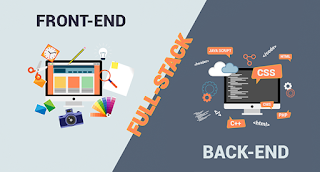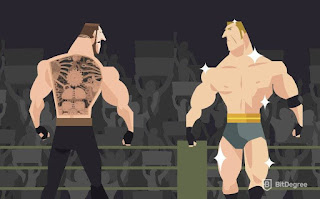You may have heard the phrases “front end” and “back end” being tossed around in reference to programming before. If you are new to programming, you might be wondering what these terms actually mean.
At a high level, the "front end" is what visitors or users will see when they interact with a program, application, or platform. The "back end" is where programmers create processes to make those interactions run smoothly.
When working on a new project, software developers build programs from the ground up. Most applications are powered by both front-end and back-end programming languages.
But the question remains: Should you start learning a front-end or a back-end language first? In this article, we'll explain the difference between front and and back end development in more detail (and we'll take a look at full-stack development, too), to help you decide where to get started.
What is front-end development?
Front-end development is all about designing the surface level of applications by changing their style and appearance to meet the needs of the user or customer. To put it simply, the front end manages the parts of websites and applications that users actually see and interact with to perform certain tasks.
When people think of the front end, they usually associate it with the style of a website — such as the page layout, menus, and images. Front-end developers are responsible for updating company pages, customizing layouts, adding animated elements, ensuring accessibility, and more.
Check out the following video and read on to find out more about how to get started with front end development.
Front end programming languages
What languages are used in front end development? Generally, the front end uses HTML, CSS, and JavaScript.
HTML is the structural backbone of a site, CSS (Cascading Style Sheets) is the custom skin that defines the style of the visuals, and JavaScript affects how elements on the page move around.
You'll also want to familiarize yourself with some front-end frameworks like React, Vue, and Angular. Frameworks are specialized technologies that help you set up applications. Rather than writing everything from scratch, frameworks allow you to speed up the development process.
Getting started with front-end development
Interested in learning more about front-end development? We suggest picking up the fundamentals of web development with HTML/CSS as they're the foundation of all web pages. You could start with the
Even if your ultimate goal is to become a back end or full stack developer, experienced developers might recommend that you master front-end development first. By understanding how the front end of websites are built, you can identify ways to make applications run more smoothly behind the scenes. If you want to learn about it all, check out our
What is back-end development?
Back-end development dictates how programs function by creating hidden processes that run behind the scenes. Still, there is a lot more to the back end than just controlling the overall functionality of an app or a website. It also details what happens on the server and database.
What developers call the back end is what's operating in the background, unseen without peering into the source code. Think of the front end as a menu at a restaurant: It allows you to order something from a list of items that are brought out from another room.
Think of the back end as the kitchen. It acts as a hidden compartment where the chef is preparing your food. There needs to be a way for the customer to communicate with the chef, so the waiter acts as the middleman by sending orders to the kitchen. The back-end developer is the waiter who handles the website database using a back end, or server-side, language.
Back end programming languages
There are a whole variety of programming languages used on the back end. Here at Codecademy, we teach back-end development primarily in JavaScript, Python, and C#. When you're starting out, we recommend focusing on JavaScript, as having a single language for front end and back end makes for an easier path towards strong full stack development.
Interested in learning about back-end frameworks? Check out Express, Flask, and asp.net. We also recommend checking out this great MDN Web Docs article on server-side frameworks and how to select one.
What is full-stack development?
Full-stack development refers to a combination of front-end and back-end development. The programmer will be interacting with both client and server-side functions. A full-stack developer is a hybrid of those two roles, well-versed in multiple areas and capable of designing entire websites or applications from scratch.
Full-stack developers wear many different hats. Their versatility allows them to contribute to any stage of the software development cycle. One advantage of being a full-stack developer is that you’ll be able to recognize what makes a website intuitive and easy to use, as well as how to build it most effectively.
Getting started
If you’re interested in learning how to design interactive websites, you can get a feel for both the front end and the back end by taking our Web Development Career Path.
This path starts out by teaching you the basics of HTML and then progresses quickly through CSS, JavaScript, and React. By the end, you should have a good idea of what interests you most so you can decide whether front-end, back-end, or full-stack development is for you!


Comments
Post a Comment